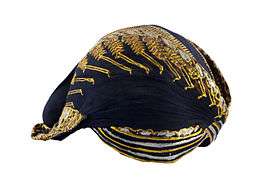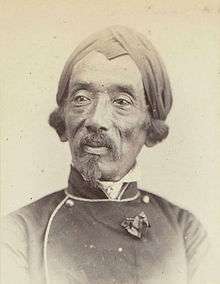Blangkon


A blangkon or belangkon (Indonesian) is a traditional Javanese headdress worn by men and made of batik fabric. There are 4 different types of blangkons according to their shapes and origins: Ngayogyakarta blangkons, Surakarta blangkons, Kedu blangkons, and Banyumasan blangkons.
History
In ancient Javanese society, blangkons are believed to originate from the legendary story of Aji Saka. In the story, Aji Saka defeated Dewata Cengkar, a giant who owns the land of Java, by spreading a giant piece of headdress that could cover the entire land of Java. Aji Saka was also believed to be the founder of the Javanese calendar.
There are theories stating that the use of blangkon is the influence of Hindu and Islamic culture absorbed by the Javanese. The first Muslims who entered Java are people from mainland Arab and Gujarati traders. Blangkons are believed to derive from turbans worn by Gujarati traders.
Gallery
-

The Javanese traditional attire for men is always worn with the Blangkon and accompanied by a Kris
-

Man wearing a tied version of blangkon
-

Fifth Indonesian President Megawati and her family
-

Raden Saleh, a famous Indonesian painter in the colonial era
-

Ngayogyakarta-style blangkon
-
_Probolinggo_TMnr_10001910.jpg)
Colonial young man wearing blangkon